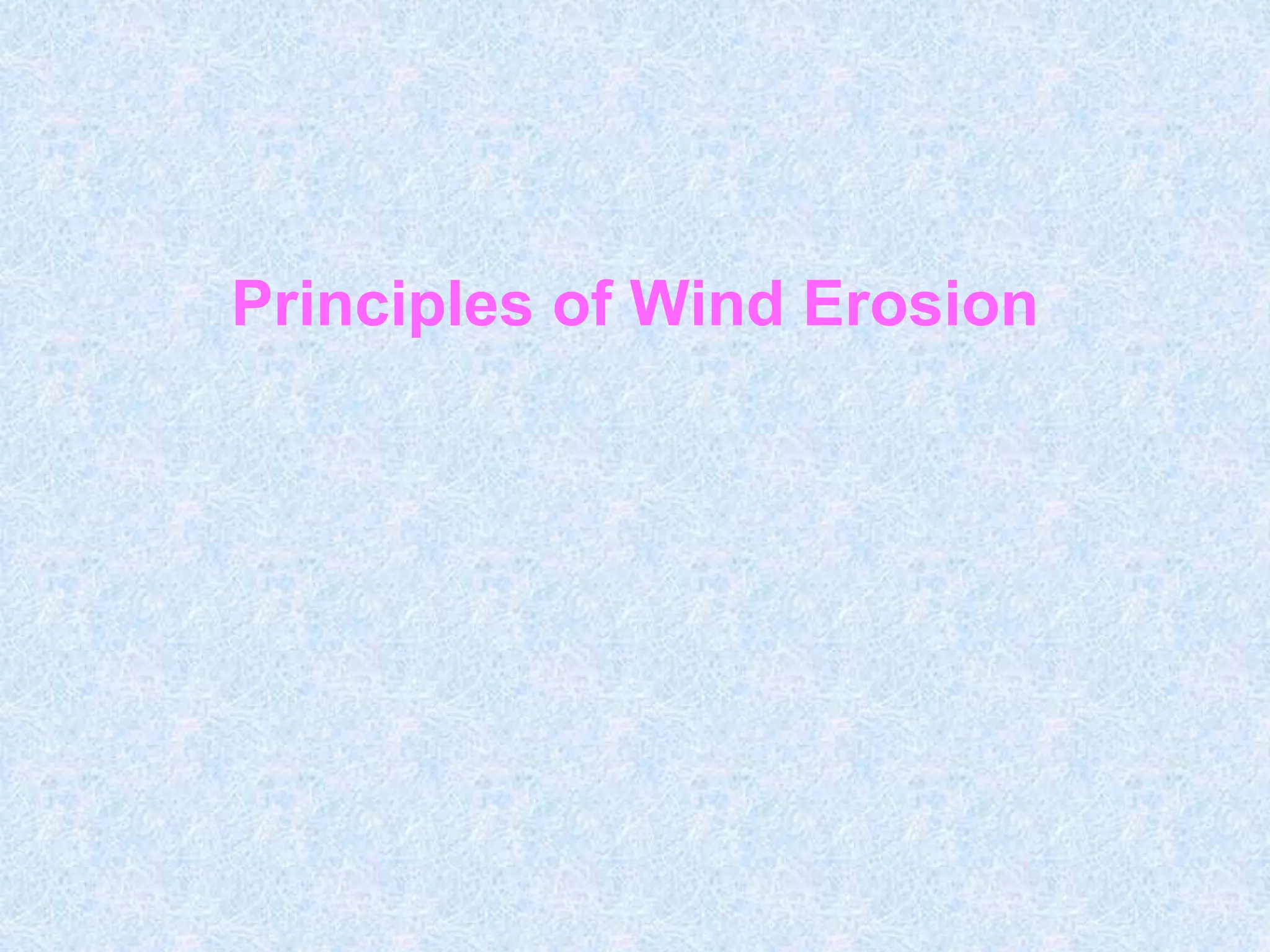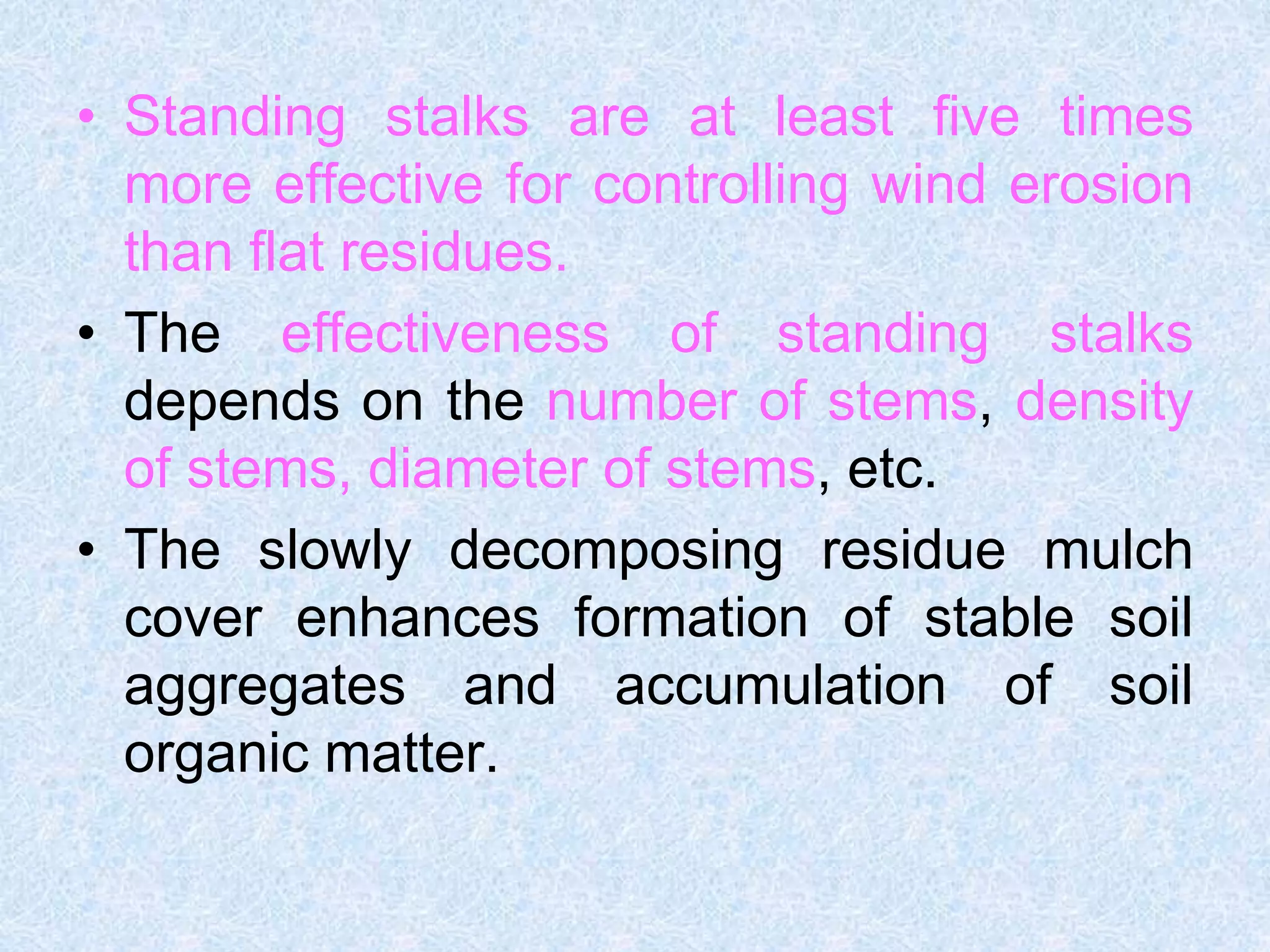Wind erosion occurs when wind detaches, transports, and deposits soil particles. It is a major cause of soil deterioration globally, including parts of India like Rajasthan. Factors like high winds, dry and loose soil, lack of vegetation make some regions more prone to wind erosion. Common management practices include maintaining crop residues on the soil surface, conservation tillage techniques, and mechanical barriers to disrupt wind flow over bare soils.

























































